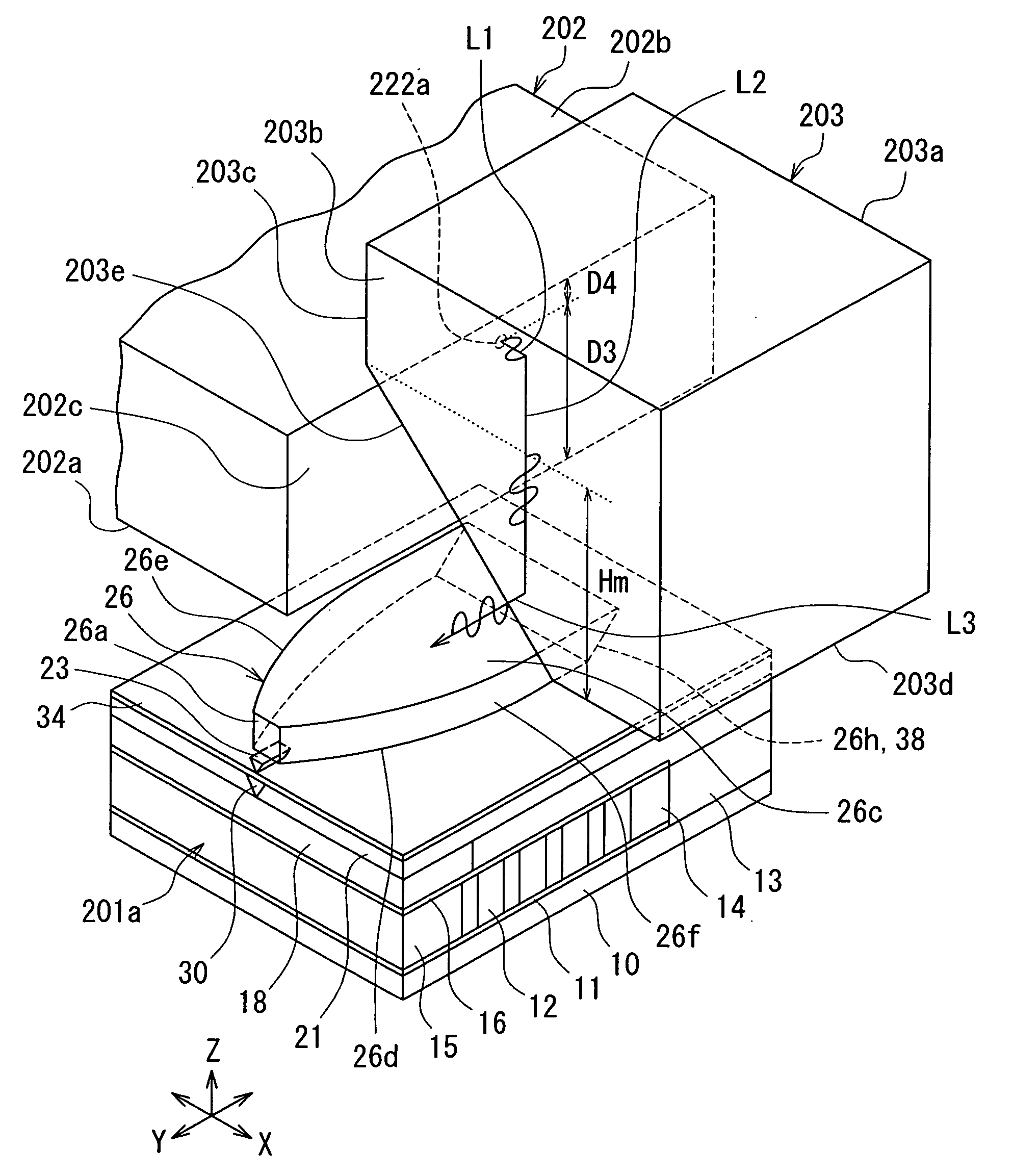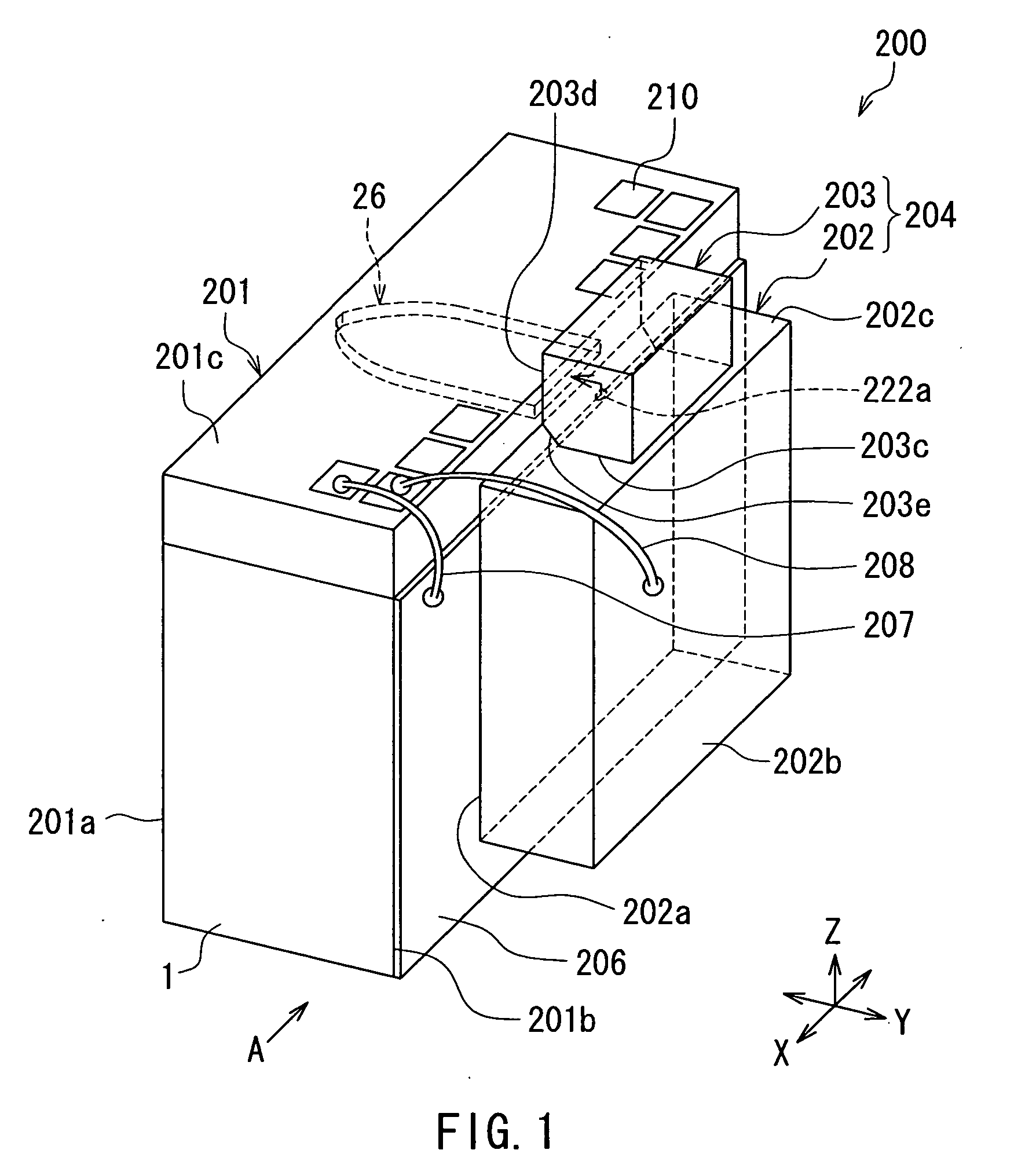Heat-assisted magnetic recording head with laser diode fixed to slider
a laser diode and magnetic recording technology, applied in the direction of mounting head within the housing, semiconductor lasers, instruments, etc., can solve the problems of increasing the coercivity of the recording medium, reducing the thermal stability of the magnetization of magnetic fine particles, and difficult to perform data recording with existing magnetic recording heads
- Summary
- Abstract
- Description
- Claims
- Application Information
AI Technical Summary
Benefits of technology
Problems solved by technology
Method used
Image
Examples
first embodiment
[0075]Preferred embodiments of the present invention will now be described in detail with reference to the drawings. Reference is first made to FIG. 1 and FIG. 2 to describe a heat-assisted magnetic recording head and a magnetic disk drive according to a first embodiment of the invention. FIG. 1 is a perspective view of the heat-assisted magnetic recording head according to the present embodiment. FIG. 2 is a side view of the heat-assisted magnetic recording head as viewed from the direction A of FIG. 1.
[0076]The magnetic disk drive of the present embodiment incorporates the heat-assisted magnetic recording head 200 according to the present embodiment. The heat-assisted magnetic recording head 200 is supported by a not-shown suspension and is disposed to face a circular-plate-shaped recording medium (magnetic disk) that is driven to rotate. In FIG. 1 and FIG. 2, the X direction is a direction across the tracks of the recording medium, the Y direction is a direction perpendicular to ...
modification example
[0153]A modification example of the present embodiment will now be described. FIG. 19 is a plan view showing a part of the waveguide 26 and the near-field light generating element 23 of the modification example. FIG. 20 is a perspective view of the near-field light generating element 23 shown in FIG. 19. In the near-field light generating element 23 of the modification example, the side surfaces 23d and 23e have their respective portions that decrease in distance from each other in the track width direction with decreasing distance to the medium facing surface 201a. The corner portion between the side surface 23d and the second end face 23b and the corner portion between the side surface 23e and the second end face 23b are both rounded. In this modification example, in particular, the side surfaces 23d and 23e excluding the above-mentioned two corner portions decrease in distance from each other in the track width direction with decreasing distance to the medium facing surface 201a....
second embodiment
[0161]A heat-assisted magnetic recording head according to a second embodiment of the invention will now be described with reference to FIG. 21 to FIG. 25. FIG. 21 is a perspective view of the heat-assisted magnetic recording head according to the present embodiment. FIG. 22 is a perspective view of the main part of the heat-assisted magnetic recording head shown in FIG. 21. FIG. 23 is a cross-sectional view showing the configuration of the slider of the present embodiment. FIG. 24 is a front view showing the medium facing surface of the slider of the present embodiment. FIG. 25 is a perspective view showing the near-field light generating element and its vicinity in the heat-assisted magnetic recording head according to the present embodiment.
[0162]In the present embodiment, the laser diode 202 is fixed to the slider 201 by bonding the p-electrode 214 (see FIG. 3) to the top surface 201c of the slider 201 such that the mounting surface 202a faces the top surface 201c and the emitti...
PUM
 Login to View More
Login to View More Abstract
Description
Claims
Application Information
 Login to View More
Login to View More - R&D
- Intellectual Property
- Life Sciences
- Materials
- Tech Scout
- Unparalleled Data Quality
- Higher Quality Content
- 60% Fewer Hallucinations
Browse by: Latest US Patents, China's latest patents, Technical Efficacy Thesaurus, Application Domain, Technology Topic, Popular Technical Reports.
© 2025 PatSnap. All rights reserved.Legal|Privacy policy|Modern Slavery Act Transparency Statement|Sitemap|About US| Contact US: help@patsnap.com



